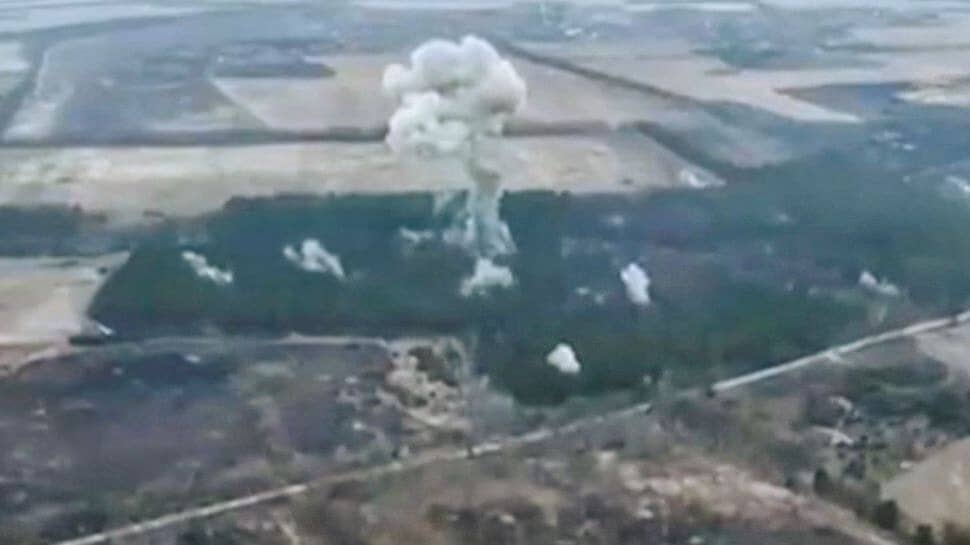Recent reports have ignited intense debate on the global stage: has the US provided intelligence to Ukraine, and what are the potential repercussions? Russian social media is abuzz with claims, and the implications for international relations, particularly between Russia, the US, and Europe, are a significant topic of discussion. Let’s fact-check and explore the evolving landscape of modern warfare.
US Intelligence to Ukraine: A Confirmed Reality
The claim that the United States has provided intelligence on Russian airbases to Ukraine is factually accurate. It is widely acknowledged that the US has been a crucial source of intelligence for Ukraine, significantly aiding its defense efforts and its ability to target Russian military assets. This includes information that has been instrumental in recent Ukrainian drone attacks on Russian airbases deep within Russian territory.
Since Russia’s full-scale invasion in 2022, the US and its allies have offered a wide spectrum of military and intelligence assistance. This encompasses real-time data on troop movements, logistics, and threats, all vital for Ukraine’s strategic planning. While specific details of intelligence sharing remain classified, its impact on the conflict is undeniable.
The Myth of “Open Skies” for Bombers
Another claim circulating suggests an agreement between the US and Russia to park strategic bombers in the open for satellite verification. This notion is misleading.
While there was a “Treaty on Open Skies,” which permitted unarmed observation flights over each other’s territories to foster transparency and confidence, it was about aerial observation, not parking bombers for satellite checks. Crucially, the United States withdrew from this treaty in 2020, citing Russian non-compliance, and Russia followed suit in 2021. Therefore, this agreement is no longer active between the two nations.
It’s also important to remember that both the US and Russia possess highly advanced satellite intelligence capabilities, constantly monitoring military activities globally, irrespective of specific treaties.
The Price of Information: Will the US and Russia Go to War?
Given the confirmed intelligence sharing, a natural question arises: will this lead to a direct war between the USA and Russia? The answer, unequivocally, is no, not automatically.
Providing intelligence is a form of indirect support, a strategic choice to aid Ukraine’s defense without direct military engagement with Russian forces. Both the US and Russia, as nuclear powers, are acutely aware of the catastrophic consequences of a direct conflict. The ongoing situation is often characterized as a “proxy conflict,” where major powers support opposing sides without direct combat. This approach is designed to avoid escalating tensions into a full-blown war.
While Russia vehemently condemns Western military and intelligence aid, it has not, to date, declared war on the US or NATO over this support. The primary risk lies in miscalculation or an unintended incident that could spiral, but both sides are meticulously trying to avoid such scenarios.
Russia, Europe, and NATO’s Stance: A Tightrope Walk
The pressure on Russian President Putin for “revenge” due to Western intelligence sharing is real. However, this is unlikely to translate into a direct conventional military invasion of a European NATO member. Instead, Russia’s “shadow warfare” tactics are more probable:
- Heightened Cyberattacks: Targeting critical infrastructure in perceived hostile nations.
- Intensified Disinformation and Propaganda: Aiming to sow discord and undermine trust within Europe.
- Espionage and Sabotage: Increased covert operations and potential attacks on infrastructure.
- Military Posturing: Demonstrating strength through exercises near NATO borders.
A direct conventional war between Russia and a European NATO country is unlikely but not impossible due to the formidable deterrent of NATO’s Article 5, which stipulates that an attack on one member is an attack on all. This collective defense principle means a direct attack would trigger a unified response from the entire alliance.
However, the specter of a Donald Trump presidency casts a long shadow over NATO and European security:
- “America First” and Burden-Sharing: Trump’s past rhetoric on European defense spending and his skepticism about NATO’s value to the US could strain alliance cohesion.
- Doubts on Article 5 Commitment: The most significant fear is that a Trump administration might signal a weakening of the US’s unwavering commitment to Article 5, potentially emboldening Russia.
- Impact on Ukraine Aid: A less supportive stance from the US on aid to Ukraine could put increased pressure on European nations.
In response, European nations are actively strengthening their own defenses and seeking greater strategic autonomy, recognizing the evolving geopolitical landscape and the importance of self-reliance.
Conclusion
In essence, the ongoing intelligence sharing between the US and Ukraine underscores a carefully calibrated proxy conflict, where nuclear powers meticulously avoid direct confrontation while supporting their respective interests. As we’ve seen, Russia’s retaliation is likely to manifest in the shadows – through intensified cyberattacks, disinformation campaigns, and espionage – rather than a direct conventional war with NATO.
However, the geopolitical chessboard remains fluid. The shifting sands of European security, particularly with the specter of a potential US leadership change impacting NATO’s unity and commitment, demand increased self-reliance and strategic autonomy from European nations. Ultimately, the information war, intertwined with military aid and diplomatic maneuvering, is a critical front in this evolving global landscape, continuously reshaping the dynamics of peace and security and highlighting the delicate balance required to navigate an increasingly multipolar world.


